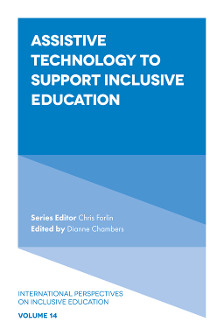
Index
Assistive Technology to Support Inclusive Education
ISBN: 978-1-78769-520-7, eISBN: 978-1-78769-519-1
ISSN: 1479-3636
Publication date: 25 September 2020
Citation
(2020), "Index", Chambers, D. (Ed.) Assistive Technology to Support Inclusive Education (International Perspectives on Inclusive Education, Vol. 14), Emerald Publishing Limited, Leeds, pp. 235-241. https://doi.org/10.1108/S1479-363620200000014002
Publisher
:Emerald Publishing Limited
Copyright © 2020 Emerald Publishing Limited
INDEX
- Prelims
- Assistive Technology Supporting Inclusive Education: Existing and Emerging Trends
- The SETT Framework: A Model for Selection and Use of Assistive Technology Tools and More
- Low-tech Assistive Technology to Support Students with Disability in Low-income Countries
- Maths Assistive Technology to Support Inclusion
- Aided Communication Systems: Using Assistive Technology to Support Individuals with Complex Communication Needs
- Tablet Devices for Students with Disability in the Inclusive Classroom
- Assistive Technology Costs and Outcomes
- Designing Inclusive STEM Learning Experiences for Adolescents with Autism Spectrum Disorder: Leveraging Robotics to Support Discourse
- Enhancing Learning and Development of Young Children with Disabilities with Assistive Technology
- Getting Around: Assistive Technology for Mobility
- Implementation of Assistive Technology in Inclusive Classrooms
- Remote Assistive Technology Services: Many Things Are Remotely Possible
- Assistive Technology in the Kingdom of Saudi Arabia
- Index